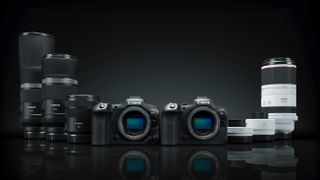Right from the start, the Canon RF lens roadmap was ambitious. However, when the new RF-mount mirrorless system was announced back in 2018, we had no idea how quickly, comprehensively and aggressively Canon would mature its new ecosystem.
Fast-forward to 2022 and the Canon RF lens roadmap features almost all of the lenses that an amateur or professional photographer could want, from wide-angle 15-35mm f/2.8 pro zooms to 800mm f/11 budget mega-telephotos. And with the in-body image stabilization of the Canon EOS R5, EOS R6 and EOS R3, they all benefit from super-stability on the latest bodies even if they don't incorporate lens IS.
Of course, they're also fully compatible with and perform fantastically on the Canon EOS R and Canon EOS RP, as well as the dedicated astrophotography body Canon EOS Ra.
While Canon still fully supports the EF mount, which was introduced in 1987, the manufacturer has made clear that "for now, our focus is on RF.” So now we're seeing Canon make a true shift away from its 30-year-old EF system to the cutting-edge RF mount that will see the company through the next 30 years.
At a recent Canon Strategy Conference, the company committed to keeping the pace of new RF lenses launched at current level through to 2025. With 26 RF lenses in the range at the end of 2021, and with eight new lenses launched in the last 12 months - we can extrapolate that there could well be 58 RF lenses by start of 2026.
The Canon RF mount has the same 54mm diameter, but boasts a flange focal distance (the space between the lens and the sensor) of 20mm (24mm shorter than that of the EF/EF-S mount, thanks to the lack of mirror) and 12 electrical contacts (4 more than EF/EF-S, providing faster communication).
Most of the first generation of RF lenses were geared towards taking full advantage of the new mount, resulting in premium-performing but premium-priced optics. Now, however, the range includes affordable primes, zooms and super-telephotos, meaning that there's something for photographers of all levels and budgets.
Get the Digital Camera World Newsletter
The best camera deals, reviews, product advice, and unmissable photography news, direct to your inbox!
Current Canon RF prime lenses
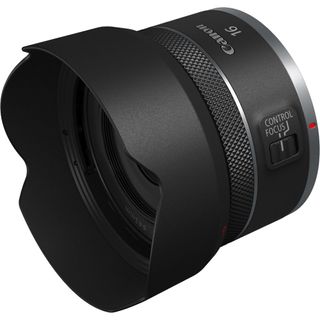
Canon RF 16mm f/2.8 STM
An attractively-priced super-wide prime that is small enough for you for you to pack into your camera bag wherever you travel. Perfect for when you don't want to take a chunkier, and much more expensive, zoom with you.
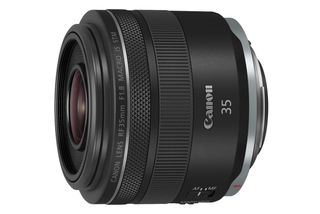
Canon RF 35mm f/1.8 Macro IS STM
A light weight and affordable fast RF prime, this super compact lens is perfect for street and travel photography – and, thanks to its tiny size and weight, it pairs perfectly with the svelte Canon EOS RP.
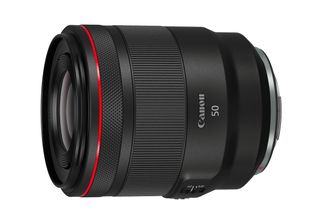
Launched along with the EOS R, the first prime for the system is a truly lustworthy lens. Sharp enough to cut glass and with bokeh to die for, it's a great showcase for what the RF mount is capable of.

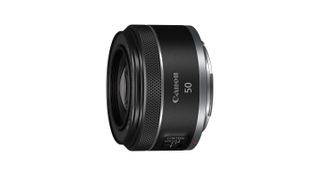
Every lens system needs a cheap, light weight and fast 50mm lens - the classic 'nifty fifty - to be truly complete. This 50mm f/1.8 STM is a brilliant optic - light (just 160g), ultra-compact, yet tack-sharp and very affordable. It's a great pairing with smaller R-series bodies like the EOS RP, but enthusiasts and pros are also sure to appreciate the superb value on offer here.
See our Canon RF 50mm f/1.8 STM review

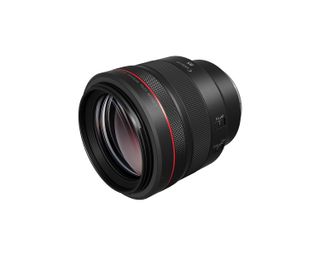
This super-fast lens is the perfect choice for professional portrait photographers, top wedding shooters and bokeh lovers. Half a stop faster than the usual 85mm f/1.4 lenses used by these photographers, this is likely to become an instant classic. But its credentials do demand a suitably premium price tag...
See our Canon RF 85mm f/1.2L USM review

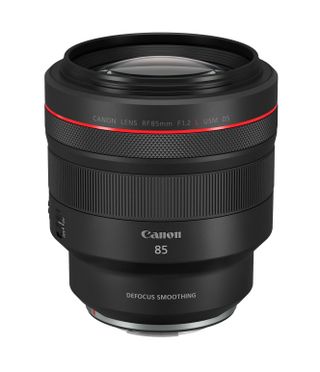
One of our favorite lenses for the RF mount, or indeed any camera system, the RF 85mm Defocus Smoothing optic is almost a Lensbaby lens in the special effect it delivers. Thanks to a special DS Coating on two lens elements, it produces the creamiest, dreamiest, silky smoothest bokeh you'll ever see – albeit at the cost of about 1⅓ stops of light (giving this f/1.2 lens an effective T-stop of T2.2). Check out our review for comparison shots with the standard RF 85mm f/1.2L lens.
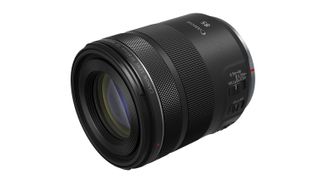
Canon RF 85mm f/2 Macro IS STM
Unlike Canon's f/1.2 monster primes, this RF 85mm f/2 lens has a much more accessible price tag, yet still sports a fairly fast f/2 max aperture. It also boasts a macro shooting option with 0.5x magnification, making it perfect for all your close-up needs. Its similar in many respects to the RF 35mm f/1.8, and that's a good thing!
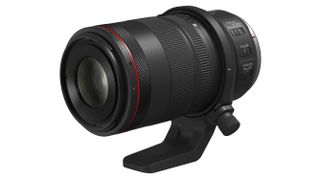
Canon claims this is the "world's first" autofocusing macro lens with 1.4x magnification. On top of that, there's also a Spherical Aberration control ring which enables photographers to "vary the look of the background and foreground bokeh, while allowing them to create a soft-focus effect on the subject." The increased 1.4:1 reproduction ratio means subjects are recorded larger than life-size on the image sensor, while 5 stops of lens-based image stabilization can be amplified to 8 stops when used with the Canon EOS R5 and Canon EOS R6.
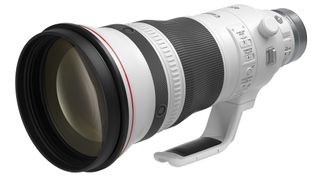
Designed for professional sports and news photographers, the optical construction of this premium RF telephoto lens is largely indistinguishable from its DSLR counterpart, the Canon EF 400mm f/2.8L IS III USM. However, it delivers an extra half-stop of image stabilization over its EF equivalent (5.5 stops) and it feature a double power drive mechanism, enabling super-fast autofocus performance - designed to keep up with the 30fps pace of the EOS R3.
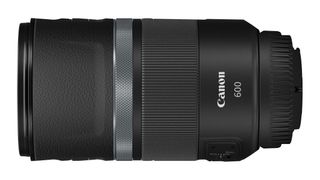
Canon changed the game with its mega-telephoto tag team of lenses, designed to be incredibly light, compact and affordable. Both this lens and its 800mm sibling feature a fixed f/11 aperture and image stabilization, with the 600mm optic offering 5 stops of IS. Yet it weighs just 930g and measures 199.5mm collapsed or 269.5mm at full extension (compared to the 3,050g and 448mm of the Canon EF 600mm f/4L IS III USM).
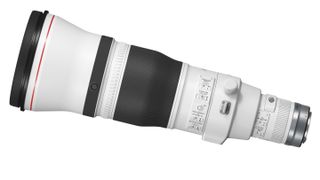
Unlike the previous RF 600mm f/11 IS STM and 800mm f/11 IS STM, which were designed to offer a low-cost super telephoto optic for the masses, this lens and its 400mm f/2.8 sibling are priced exclusively for professionals and high-end shooters. The premium construction comprises Fluorite and Super UD glass elements, along with ASC and Super Spectra coatings, minimizing distortion and flare and ensuring fantastic edge-to-edge resolution even wide open. Such is the optical quality that both lenses can be used with the Canon Extender RF 1.4x and Canon Extender RF 2x teleconverters.
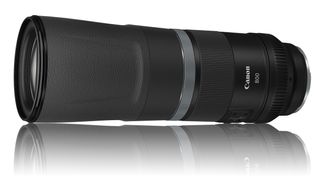
An 800mm lens for under $1000 is exciting enough, but one that weighs just 1,260g and is only 281.1mm collapsed and 352mm when fully extended (compared to the 4,500g and 461mm of the Canon EF 800mm f/5.6L IS USM) is even more amazing. Throw in 4-stop image stabilization to sweeten the deal, and you can mount it to the RF Extender 2x to shoot at 1600mm f/22. This lens has crashed through all kinds of shooting frontiers!
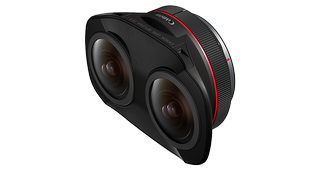
Canon RF 5.2mm f/2.8L Dual Fisheye
A specialist 3D virtual reality lens, the Canon RF 5.2mm f/2.8L Dual Fisheye is a revolutionary stereoscopic 180° VR lens for video and stills, aimed at everything from the healthcare and manufacturing industries to filmmakers and VR content creators.
Current Canon RF zoom lenses
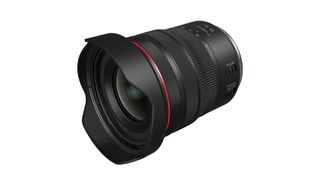
Canon RF 14-35mm f/4L IS USM
Super wide, super sharp and lightweight wide-angle zoom – the Canon RF 14-35mm f/4L IS USM is a great choice for landscape and architectural photography. It is not as fast as. the Canon RF 15-35mm f/2.8L IS USM - but it is easier to carry around, and lighter on the wallet.
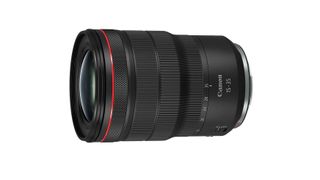
Canon RF 15-35mm f/2.8L IS USM
Filling the wide-angle gap for landscape shooters, this is the first of the all-important RF 'trinity lenses' (which also comprise the 24-70mm and 70-200mm optics) and it's a truly fantastic lens for stills and video alike.
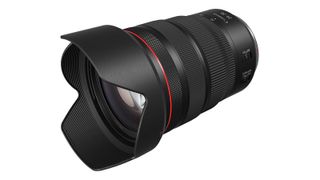
Canon RF 24-70mm f/2.8L IS USM
The second of the trinity optics – all of which are image stabilized, with a fast f/2.8 aperture – this is the all-purpose lens that everyone from average Joes to working pros want in their kit bag.
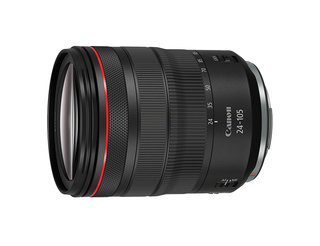
The Canon EOS R was bundled with this lens at launch, but that 'kit lens' designation belies how good this optic really is. The first zoom, and the first stabilized lens, for the RF mount, it's a great all-round performer.
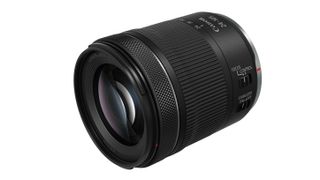
Canon RF 24-105mm f/4-7.1 IS STM
With many RF lenses being so premium priced, this refreshingly affordable optic is a welcome addition to the RF system. It's a non-L-series lens with 0.5x macro magnification, and is an excellent everyday enthusiast lens. It isn't the premium performer that the f/4L version is, but the results are still impressive – and the f/7.1 aperture isn't as limiting as you might expect.
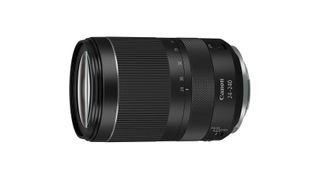
Canon RF 24-240mm f/4-6.3 IS USM
Like the highly portable 35mm f/1.8 and 50mm f/1.8 RF lenses, this travel-friendly superzoom optic is almost tailor-made for the svelte Canon EOS RP. An ultra-compact 10x optical zoom with stabilization, it's a brilliant everyday and travel lens.
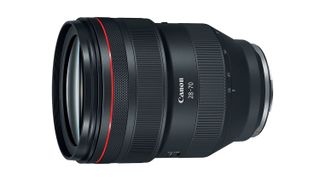
On sale since 2018, this is a great example of the kind of optic that simply wasn't possible on the EF mount. Though a formidable tool for professionals, this bulky, heavy lens feels a little mismatched with slender R system bodies.
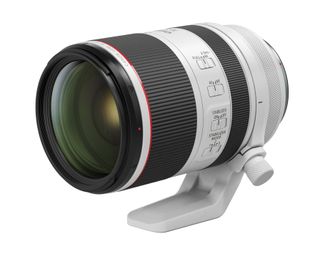
Canon RF 70-200mm f/2.8L IS USM
The third pillar of the holy trinity, this telephoto zoom gives the EOS R-series cameras a native option for wildlife, birding and sports photography. It's remarkably small at around two-thirds the size of the Canon EF 70-200mm f/2.8L IS III USM, only coming up to the focus ring of its EF counterpart when stood side by side.
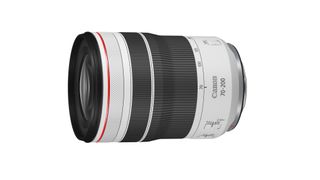
Matching the current EF lens 70-200mm lens line-up for Canon DSLRs, the RF-mount system now has its own smaller, lighter and cheaper 70-200mm to sit next to the premium 70-200mm f/2.8L optic. If you can live a max aperture that's a stop slower, this f/4 lens is almost a miniature marvel – it's so small that it can fit into a sling bag while still mounted on a camera. Center sharpness at 200mm is as good as at 70mm, and with up to 7.5 stops of stabilization (when mounted to an EOS R5 or R6) it delivers rock-solid performance for both stills and video.
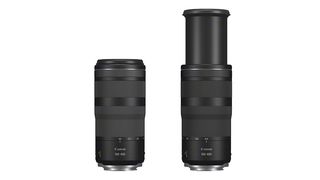
Canon RF 100-400mm f/5.6-8 IS USM
A compact and surprising affordable supertelephoto lens, that will appeal to travel, wildlife and sports photographers. The compromise is the narrower-than-usual f/8 maximum aperture at the 400mm lens - but with the mirrorless system this is less of a hindrance than with traditional DSLRs.
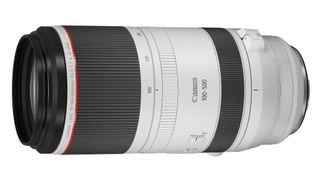
Canon RF 100-500mm f/4.5-7.1 L IS USM
Making the R system even more viable for professionals is the new RF 100-500mm lens, which is the perfect lens for sports and wildlife shooters. It can pair with both of Canon's RF Extenders (but only from 300-500mm, due to physical limitations), delivering up to 1,000mm range. It combines Canon's legendary L-series build quality with premium optical performance that's up there with the very best Canon zoom lenses we've tested.
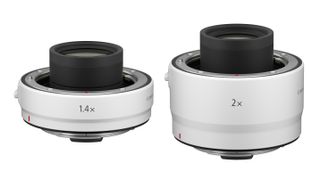
Canon Extender RF 1.4x / Canon Extender RF 2x
Adding further reach to specific long-range optics, these RF teleconverters will multiply the focal length of a compatible lens accordingly. However, they will also affect the aperture; the 1.4x will bring a one-stop reduction in maximum aperture, with the 2x bringing a two-stop reduction. They are fully compatible with the 600mm f/11 and 800mm f/11 lenses, and partly compatible with the 100-500mm lens (from 300-500mm), but due to physical limitations they are incompatible with other RF optics.
Canon RF lenses coming in 2022
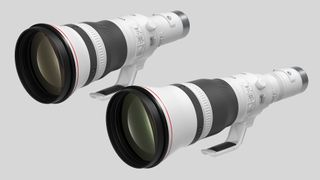
Canon RF 800mm f/5.6 L IS USM - professional super telephoto long tom, due to go on sale from May for $16,999 / £19,100.
Canon RF 1200mm f/8 L IS USM - record-beating supertelephoto that will cost $20,000 / £22,450 when it arrive in May 2022.
Third-party Canon RF lenses
Obviously there are plenty of other manufacturers making lenses for the Canon EOS R and RP as well. Here are some of the highlights of other, non-Canon, optics available for the RF mount.
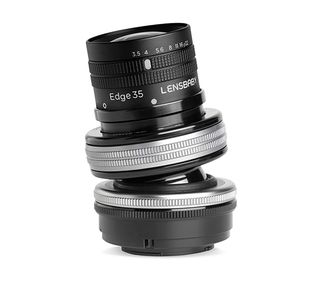
Lensbaby Composer Pro II, Lensbaby Velvet, Lensbaby Trio
Lensbaby Optics, such as the new Lensbaby Edge 35, aren't lenses in their own right, but are add-ons for the Lensbaby Composer Pro II housing – which is now available for the RF mount. In addition, the company's dedicated standalone lenses – including the Lensbaby Velvet 56, Lensbaby Velvet 85 and Lensbaby Trio – are also available for Canon's full-frame mirrorless system.
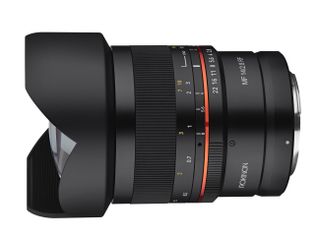
A mirrorless-fit version of Samyang's best selling ultra-wide angle prime lens. It is constructed from fourteen elements in ten groups, with one H-ASP element, one ASP element and two ED elements in its build, along with six aperture blades. Measuring 87 x 120mm, and weighing 800g, it does not have a front filter ring due to the bulbous nature of the front element.
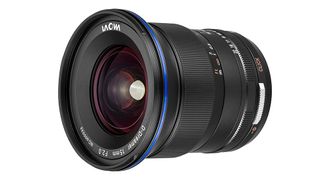
The Laowa 15mm f/2 Zero-D is a fantastic optic, offering an ultra wide-angle lens with a fast f/2 aperture and an affordable price – making it a bit of a unicorn lens for architectural and landscape photographers. And for videographers, the ability to de-click the aperture by sliding a switch makes this an essential lens for shooting wide. It's all-manual, but the image quality and distortion control are both impressive.
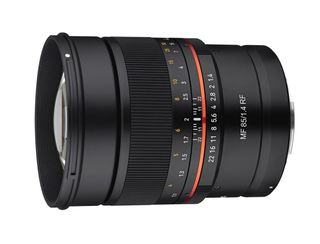
An update of a well-respected lens available in other mounts, known for its bokeh characteristics. The fast telephoto prime has a total of nine elements in seven groups, with eight diaphragm blades. An H-ASP lens minimizes various aberrations and maximizes the image quality and contrast from corner to corner, even wide open. Ultra-multi-coating promises low reflectivity and excellent contrast, and is claimed to offer high transmittance of light while minimizing flare and ghosting. The lens measures 78 x 98.7mm, weighs in at 730g, has a minimum focusing distance of 1m and has a front filter ring measuring 72mm.
Read more:
The best Canon RF lenses on sale now
Canon EOS R review
Canon EOS RP review
Canon camera rumors
